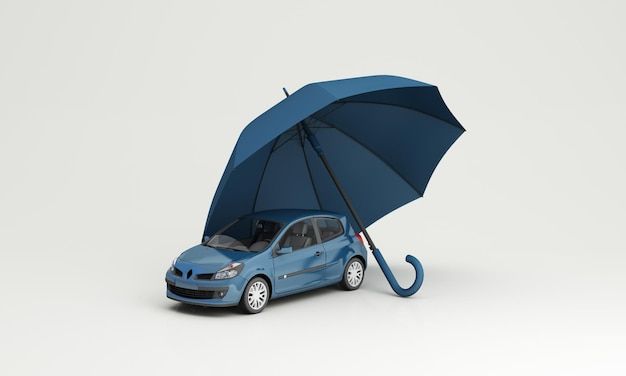
Choosing the right car insurance is key to protect your car and money. There are many options, making it hard to pick the best one for you.

The right insurance coverage keeps you safe in accidents or unexpected events. It’s important to know the different coverages and pick one that fits your needs.
In this guide, you’ll learn how to pick the best car insurance. This will help you make a smart choice and stay safe on the road.
Key Takeaways
- Understanding the importance of car insurance
- Knowing the different types of insurance coverage
- Assessing your specific insurance needs
- Comparing policies from various providers
- Making an informed decision when choosing car insurance
Understanding Car Insurance Basics
Car insurance is complex, but knowing the basics is key. It protects you financially if your car gets damaged or if you’re in an accident.
What Car Insurance Actually Covers
Car insurance policies have different types of coverage. Liability coverage is crucial. It pays for damages to others if you’re at fault. This includes bodily injury liability and property damage liability.
Other common coverages are collision, comprehensive, and personal injury protection.
- Collision coverage pays for damages to your vehicle from a collision.
- Comprehensive coverage covers damages not from a collision, like theft or natural disasters.
- Personal injury protection (PIP) covers medical costs for you and your passengers.
Legal Requirements in the United States
In the U.S., car insurance laws vary by state. Most states require at least liability coverage. Knowing your state’s laws is important to avoid fines or penalties.
How Insurance Companies Calculate Risk
Insurance companies look at many factors to figure out your risk. These include your driving history, car type, and credit score. These help set your insurance rates.
For example, a clean driving record can lower your premiums a lot.
Understanding these basics helps you make better choices about your car insurance.
Assessing Your Personal Insurance Needs
To pick the best car insurance, I must think about what I really need. I look at several important things that affect how much coverage I need.
Evaluating Your Vehicle’s Value and Age
The value and age of my car are key in picking insurance. A newer, more expensive car might need more coverage. This includes collision insurance to avoid big losses.
| Vehicle Age | Recommended Coverage |
|---|---|
| 0-3 years | Comprehensive and Collision |
| 4-7 years | Liability and Optional Comprehensive |
| 8+ years | Liability Only |
Considering Your Driving Habits and Annual Mileage
My driving habits and how much I drive are also important. Driving a lot or having accidents can raise my insurance costs. But, there are ways to lower these costs.
“Usage-based insurance can be a cost-effective option for low-mileage drivers.” – Insurance Expert
Determining Your Financial Risk Tolerance
Knowing how much risk I can handle is key in picking insurance. I need to find a balance between covering costs and keeping premiums low.
Special Considerations for Leased or Financed Vehicles
If my car is leased or financed, I have special insurance needs. Lenders usually want comprehensive and collision coverage to protect their investment.
By looking at these factors, I can make sure my car insurance fits me perfectly. This way, I get the right coverage without spending too much.
Types of Car Insurance Coverage Explained
It’s important to know about the different car insurance coverages. Car insurance is not just a must in most states. It’s also a key financial safety net for accidents or damages.
Liability Coverage: Bodily Injury and Property Damage
Liability coverage is key in car insurance. It covers damages to others if you’re at fault. It includes bodily injury liability for medical costs and property damage liability for repairs or replacement.
Collision and Comprehensive Coverage
Collision coverage pays for your vehicle’s damages in a crash. Comprehensive coverage covers non-crash damages like theft or natural disasters.
Personal Injury Protection and Medical Payments
Personal Injury Protection (PIP) and Medical Payments coverage cover medical costs for you and passengers. PIP may also cover lost wages and other expenses.
Uninsured/Underinsured Motorist Coverage
This coverage helps if you crash with someone without insurance. It pays for medical costs, lost wages, and more.
Gap Insurance and Rental Reimbursement
Gap insurance covers the difference between your vehicle’s value and what you owe. Rental reimbursement pays for a rental car while yours is being fixed.
Roadside Assistance and Other Add-ons
Roadside assistance helps with breakdowns, like towing or fuel delivery. Other add-ons might cover custom parts or towing.
| Coverage Type | Description | Benefits |
|---|---|---|
| Liability Coverage | Covers damages to others in an accident | Pays for medical expenses, property damage |
| Collision Coverage | Covers damages to your vehicle in a collision | Pays for repairs or replacement of your vehicle |
| Comprehensive Coverage | Covers non-collision damages to your vehicle | Pays for repairs or replacement due to theft, vandalism, etc. |
Factors That Affect Your Insurance Rates
Knowing what affects your car insurance rates is key. Insurance companies look at many things to figure out your cost.
Driving Record and Claims History
Your driving record is very important. Accidents or traffic tickets can raise your rates. This shows the insurance company you might be riskier.
Vehicle Make, Model, and Safety Features
The car you drive matters too. Cars with safety features or are easy to fix cost less to insure.

Credit Score and Insurance Scores
In some places, your credit score helps set your insurance rates. A good score can mean lower costs.
Location, Age, and Demographic Factors
Where you live, how old you are, and other things also affect rates. Cities often have higher rates because of more theft and accidents.
Annual Mileage and Vehicle Usage
How much you drive and how you use your car also matters. Driving less can sometimes lower your rates, especially with certain insurance plans.
| Factor | Impact on Insurance Rates | Potential Savings |
|---|---|---|
| Good Driving Record | Lower Rates | Up to 20% |
| Vehicle Safety Features | Lower Rates | Up to 30% |
| Good Credit Score | Lower Rates | Up to 40% |
| Low Annual Mileage | Lower Rates | Up to 10% |
How to Choose the Right Car Insurance for You
Choosing the right car insurance is a balance. It’s about finding the right coverage for your needs and budget. There are key factors to consider when making this choice.
Balancing Coverage Needs with Budget Constraints
I need to look at my finances to decide how much to spend on car insurance. It’s important to find a balance. I want enough coverage but not to spend too much.
- Assess my financial situation to determine a comfortable premium range.
- Consider my coverage needs based on my vehicle’s value, driving habits, and other factors.
Selecting Appropriate Deductibles
Choosing a deductible is a big decision. A higher deductible can lower my premiums but means I pay more when I file a claim.
Key considerations:
- The deductible amount should be an amount I can comfortably afford to pay.
- A lower deductible may increase premiums, but it reduces out-of-pocket expenses during claims.
Considering Additional Riders and Endorsements
Additional riders and endorsements can add extra protection to my policy. I should look at what’s available and if it fits my needs.
“Adding the right riders and endorsements can make a significant difference in the level of protection provided by your car insurance policy.”
Tailoring Coverage to Your Specific Situation
The right car insurance for me depends on my unique situation. This includes my vehicle’s age and value, driving habits, and financial situation. By evaluating these factors, I can tailor my coverage to fit my needs.
By following these car insurance tips and considering my options, I can make a smart choice. Having the right insurance coverage gives me peace of mind and financial security.
Comparing Insurance Providers Effectively
It’s important to compare insurance providers well to find the right car insurance. There are many companies, each with different policies and benefits. Knowing what to look for is key.
Researching Company Reputation and Financial Stability
Start by checking the company’s reputation and financial health. Look at ratings from A.M. Best or Standard & Poor’s. This helps you understand if the company is stable.
Evaluating Customer Service and Claims Satisfaction
Customer service and claims satisfaction are also important. Find insurers known for good service and quick claims handling. Check customer reviews on Consumer Reports for this info.
Using Online Comparison Tools and Insurance Brokers
Online tools and insurance brokers make comparing easier. They let you see many policies and prices at once. This helps you choose wisely.
Reading the Fine Print in Policy Documents
Always read policy documents carefully. Know what’s covered and what’s not. Look at terms and conditions and any exclusions closely.
| Provider | Financial Stability Rating | Customer Satisfaction Rating |
|---|---|---|
| Provider A | A+ | 4.5/5 |
| Provider B | A | 4.2/5 |
| Provider C | A- | 4.0/5 |
As
“The key to successful insurance comparison is thorough research and a clear understanding of your needs.”
By following these steps, you can compare insurance providers well. This way, you’ll find the best policy for you.
Smart Ways to Save on Car Insurance
To save on car insurance, look for different ways to cut costs. Knowing these methods can lower your insurance bills a lot.
Available Discounts and How to Qualify
Many insurers offer discounts to lower your rates. Some discounts include:
- Multi-car discounts for insuring multiple vehicles under the same policy
- Good student discounts for students with excellent academic records
- Defensive driving course discounts for completing a defensive driving course
- Military discounts for military personnel and veterans
To get these discounts, you must meet certain criteria from the insurer.
Bundling Policies and Loyalty Programs
Getting multiple policies from the same company can save a lot. For example, combining car and home insurance can give you a discount. Also, long-term customers get rewards and discounts through loyalty programs.
Usage-Based and Pay-Per-Mile Insurance Options
Usage-based and pay-per-mile insurance are gaining popularity. They charge you based on how much you drive and how safely. If you drive less or safely, you can save money.
Improving Your Credit Score for Better Rates
In many places, your credit score affects your insurance rates. A good credit score can lead to lower premiums. To improve your score, pay bills on time, reduce debt, and check your credit report for errors.
Adjusting Coverage on Older Vehicles
As your car gets older, you might need to change your coverage. Dropping some coverage can lower your rates. But think about your car’s value and your finances before making changes.
Using these tips can help you save a lot on car insurance.
Common Car Insurance Mistakes to Avoid
Car insurance is a must for drivers. Yet, many make mistakes that cost them money. Knowing these common errors can help you make smart choices and get the right coverage.
Underinsuring Your Vehicle
One big mistake is underinsuring your car. This can put you in a tough spot if your car gets damaged or stolen. Make sure you pick coverage that can fix or replace your car if needed.
Focusing Only on Price, Not Coverage
Price is important, but don’t just look at it. You need to find a balance between cost and coverage. Compare quotes from different insurers to get the best deal.

Failing to Review and Update Policies Regularly
Your insurance needs can change. This might happen if you get a new car, move, or change how you drive. Always check and update your policy to keep it right for you.
Not Taking Advantage of Available Discounts
Insurers offer discounts that can lower your premiums. These can be for safe driving, bundling policies, or being a good student. Always ask about discounts when you buy or renew your policy.
Misrepresenting Information on Your Application
Being dishonest on your application can cause problems. It might lead to denied claims or your policy being canceled. Always tell the truth and fill out your application carefully.
| Mistake | Consequence | Solution |
|---|---|---|
| Underinsuring Your Vehicle | Financial loss in case of an accident or theft | Assess your vehicle’s value and choose sufficient coverage |
| Focusing Only on Price | Inadequate coverage | Balance budget with needed coverage; compare quotes |
| Failing to Review and Update Policies | Outdated or irrelevant coverage | Regularly review and update your policy |
The Process of Purchasing and Switching Insurance
To get the right car insurance, knowing the steps is key. I’ll guide you through it, focusing on important things to remember.
Gathering Necessary Information and Documents
Start by collecting all needed info and documents. You’ll need your driver’s license number, vehicle ID number (VIN), and details about your current policy. Having this info ready makes the process smoother and helps get accurate quotes.
Understanding the Quote and Policy Terms
When you get a quote, read the policy terms carefully. Know what’s covered, the deductible, and any exclusions. Don’t forget to ask for car insurance tips to lower your premiums.
Timing Your Switch to Avoid Coverage Gaps
Switching insurance providers needs careful timing. Make sure your new policy starts before you cancel the old one. This avoids coverage gaps and prevents legal or financial problems.
Setting Up Payment Methods and Auto-Renewals
After picking a new provider, set up your payments and auto-renewals. This keeps your coverage going without breaks. It’s a smart way to keep your insurance active.
By following these steps, you can confidently buy or switch car insurance.
Conclusion
Choosing the right car insurance is key. You need to know what you want, look at different options, and compare companies. Think about your car’s value, how you drive, and how much risk you can handle.
It’s important to find a balance between what you need and how much you can spend. Look at deductibles, extra riders, and endorsements that fit your needs. Also, check out insurance companies’ reputations, how stable they are, and their customer service.
To find the best car insurance, use discounts like bundling policies or loyalty programs. Also, check out usage-based insurance. Always review and update your policy to make sure you’re covered. By following these tips, you can find the right car insurance for you.
FAQ
What is the minimum car insurance required by law in the United States?
The law requires different car insurance in each state. Most states need liability coverage. This includes damage to property and injuries to people.
How do insurance companies determine my premium rates?
Companies look at many things to set your rates. They check your driving record and the car you drive. They also look at your credit score, where you live, your age, and how much you drive.
What is the difference between collision and comprehensive coverage?
Collision coverage helps pay for damage to your car in accidents. Comprehensive coverage covers damage from things like theft, vandalism, or natural disasters.
Can I bundle my car insurance with other insurance policies?
Yes, many companies give discounts for bundling. This means combining your car insurance with other policies, like home insurance.
How can I lower my car insurance rates?
To lower your rates, keep a clean driving record. Also, improve your credit score. Look for discounts, like those for safe driving or low mileage.
What is gap insurance, and do I need it?
Gap insurance helps if your car is totaled and you still owe money. You might need it if you have a loan or lease on your car.
How often should I review and update my car insurance policy?
Check and update your policy often. This is when you move, get a new car, or your driving or finances change.
What is the purpose of uninsured/underinsured motorist coverage?
This coverage helps if someone hits you and they don’t have insurance. Or if they don’t have enough to cover the damage.
Can I switch car insurance companies at any time?
Yes, you can switch companies anytime. Just make sure you do it without gaps in your coverage.




